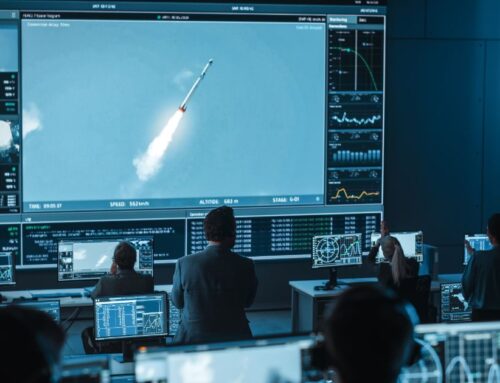
Read time: 7 mins
If you had told me a few years ago that AI could find my perfect participants before I finished my morning coffee, I probably would have said it was impossible. Today, it is simply part of how we work. AI matches the right participants in minutes, turns IDIs, groups, and online boards into transcripts almost instantly, uncovers themes and patterns, and even predicts sentiment.
Key Takeaways:
-
AI accelerates recruitment, transcription, translation, and quota monitoring, freeing researchers to focus on strategy and connection.
-
Human judgment adds empathy, context, and cultural understanding that AI alone cannot capture.
-
The strongest insights emerge when AI efficiency and human interpretation work in harmony.
-
The future of fieldwork lies in technology enhancing — not replacing — the role of researchers.
The real power comes when AI’s speed and precision work together with the human skills that bring research to life: empathy, curiosity, and the ability to adapt in the moment. Technology and people take us further when they work in harmony. AI allows us to move faster and see patterns sooner, and people add the context, connection, and emotion that turn data into true insight.
When I first started in market research at Cossette, the heart of the work lived inside mirrored focus group rooms. Those rooms are still central today, but the world around them has completely changed. I remember walking in with clipboards stacked high with freshly printed screeners, the sharp smell of toner still in the air. Recruitment updates were buried in spreadsheets so cluttered and tiny they felt like puzzles you had to solve just to read. In the corner, a heavy projector rattled and hummed while we taped visuals to boards and double-checked the whiteboard schedule one last time. Every detail was manual, every process a grind, and yet we took pride in making it all run smoothly.
Then, step by step, the tools around us evolved. Paper gave way to smart boards, and I still remember the very first one we had. It was massive and awkward, and it took two people just to roll it into place for a group. Moderators were nervous to use it at first, but soon it became the shiny new thing everyone wanted to try. Consent forms used to be sent by fax, which feels almost unthinkable now. Recruitment tracking shifted from endless spreadsheets into real-time dashboards. And today, AI helps us do in minutes what once took days: finding the right participants, transcribing conversations with precision, and surfacing themes and patterns before we even begin analysis. The mirrored room is still there, but the way we prepare, recruit, and capture insight has been completely reimagined.

Jay Thordarson
VP, Research Services
The Logit Group
“The real power comes when AI’s speed and precision work together with the human skills that bring research to life: empathy, curiosity, and the ability to adapt in the moment.”
Today the tools have evolved and so has the role of the researcher. Technology has not only modernized fieldwork, it has expanded what is possible. We are no longer simply data collectors. We are navigators of human experience, and the entire qualitative research process is now supported by game changing technology that gives us access and reach we never could have imagined.
AI has transformed the behind-the-scenes work that used to consume hours or even days. List matching that once took a team significant time now happens in minutes. AI can pre-screen hundreds of profiles and immediately surface the most qualified candidates. Transcription and translation, which once slowed analysis, now happen in real time with remarkable accuracy. In one recent study, AI translated fifteen different languages into English so seamlessly that our team began reviewing insights the same afternoon the digital ethnography launched. Real-time quota monitoring now tells us the moment a segment is close to full during recruitment, allowing us to pivot early, avoid errors, and save time and budget. The result is simple. Human teams spend less time chasing logistics and more time thinking strategically, building connections, and uncovering deeper insights.
Even the most advanced technology benefits from human interpretation. AI can flag when something seems off, but it takes a person to uncover the reason why. In one study, an AI tool flagged a participant as disengaged because her responses were short. Our recruiter followed up and quickly realized she had been speaking softly so she would not wake her child in the background. The context completely changed the interpretation. In another project focused on small-cell lung cancer, automation screened out a caregiver because of strict eligibility criteria. After hearing her story, our recruiter recognized how valuable her perspective would be and pushed back. The client agreed, and her contribution became one of the most meaningful parts of the study. Technology provides structure. Humans add judgment. Together they create outcomes that neither could achieve alone.
AI delivers speed, reach, accuracy, and precision. Human skills take raw information and transform it into meaningful insight. Human intelligence picks up on the sigh, the pause, the hesitation, or the subtle change in tone that a transcript cannot highlight. Building instant rapport helps participants feel comfortable enough to share openly. Adaptability allows researchers to abandon half a discussion guide when an unexpected but valuable theme emerges. Cultural intelligence and intuition ensure questions are asked in ways that fit the people we are speaking with, not just the objectives we are aiming to cover. When these human abilities work alongside AI’s efficiency, research becomes both precise and deeply human.
One project perfectly illustrated this partnership. A client conducted in-home interviews with parents of children living with a rare blood cancer. AI transcription was highly accurate, and its near-perfect tagging generated instant summaries of every conversation, all in real time through the client’s platform. This freed moderators to remain fully present, observing body language and tone instead of dividing their attention between listening and scrambling to take notes. During one interview, a caregiver described her son’s medication routine, pausing slightly before saying, “It’s… manageable.” The AI captured the words, but it could not capture the hesitation. The moderator, attuned to that human moment, asked, “What makes it manageable for you?” That single question opened a deeply personal discussion about the emotional strain of maintaining a brave face for her child. It became a turning point in the project, shifting the client’s recommendations from logistical support alone to include mental health resources for caregivers. AI ensured the moment was captured. Human insight gave it meaning.
The strongest fieldwork brings technology and people together in harmony. We rely on human oversight when conversations carry nuance or emotional weight. AI transcribes and summarizes in real time, but researchers interpret meaning, design follow-up, and often pivot in the guide when new insights appear. Moderators capture observations that no machine can: the shift in posture, the quick glance away, the hesitation before answering. Recruiters also contribute by noticing subtle cues in early conversations that help set the stage for richer participation later. These human touchpoints, combined with AI’s efficiency, ensure that research remains both effective and empathetic.
The future of fieldwork is not about AI replacing people. It is about AI making people better at what they already do best. AI gives us reach, accuracy, and speed we could not have imagined just a few years ago. Humans bring empathy, adaptability, and cultural understanding that keep research real. At Logit, we will continue to embrace tools that make our work smarter, while also investing in the human side that listens beyond the words, follows unexpected threads, and makes every participant feel heard. Because behind every data point is a person, and the strongest insights happen when AI and humans work together.

About The Author
Jay Thordarson
VP, Research Services
Jay is an accomplished market research professional with extensive experience in global qualitative and face-to-face research.





